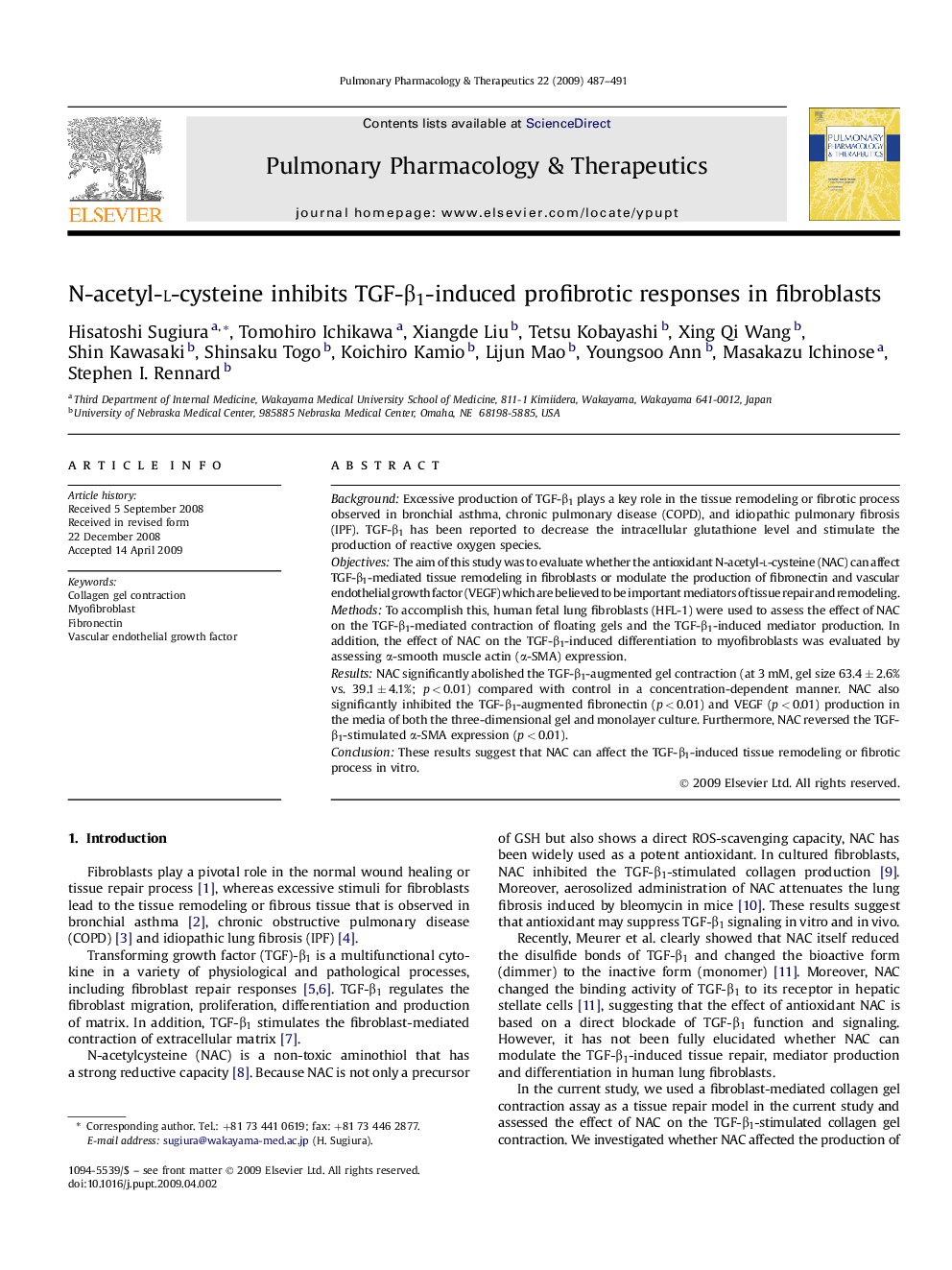| Article ID | Journal | Published Year | Pages | File Type |
|---|---|---|---|---|
| 2567730 | Pulmonary Pharmacology & Therapeutics | 2009 | 5 Pages |
BackgroundExcessive production of TGF-β1 plays a key role in the tissue remodeling or fibrotic process observed in bronchial asthma, chronic pulmonary disease (COPD), and idiopathic pulmonary fibrosis (IPF). TGF-β1 has been reported to decrease the intracellular glutathione level and stimulate the production of reactive oxygen species.ObjectivesThe aim of this study was to evaluate whether the antioxidant N-acetyl-l-cysteine (NAC) can affect TGF-β1-mediated tissue remodeling in fibroblasts or modulate the production of fibronectin and vascular endothelial growth factor (VEGF) which are believed to be important mediators of tissue repair and remodeling.MethodsTo accomplish this, human fetal lung fibroblasts (HFL-1) were used to assess the effect of NAC on the TGF-β1-mediated contraction of floating gels and the TGF-β1-induced mediator production. In addition, the effect of NAC on the TGF-β1-induced differentiation to myofibroblasts was evaluated by assessing α-smooth muscle actin (α-SMA) expression.ResultsNAC significantly abolished the TGF-β1-augmented gel contraction (at 3 mM, gel size 63.4 ± 2.6% vs. 39.1 ± 4.1%; p < 0.01) compared with control in a concentration-dependent manner. NAC also significantly inhibited the TGF-β1-augmented fibronectin (p < 0.01) and VEGF (p < 0.01) production in the media of both the three-dimensional gel and monolayer culture. Furthermore, NAC reversed the TGF-β1-stimulated α-SMA expression (p < 0.01).ConclusionThese results suggest that NAC can affect the TGF-β1-induced tissue remodeling or fibrotic process in vitro.
